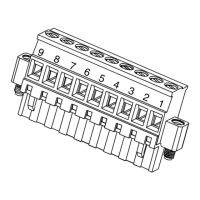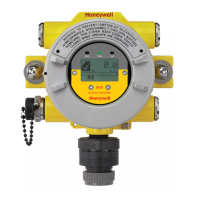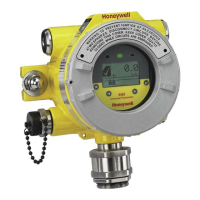XNX Universal Transmitter
Installation and Operation
34
Types of Installations
There are three basic types of installation: a single transmitter;
multiple transmitters connected to a single power source; and
multiple transmitters connected in a “daisy-chain” conguration.
Single Transmitter
This is the simplest type of installation. It consists of a single
XNX transmitter installation per power source.
Power Supply Power Supply Power Supply
Figure 27. Single transmitter installation
Advantages:
• Maximum distance between power source and transmitter
• Smaller power source
• If a power source fails, only one monitoring point fails.
Disadvantage:
• Multiple transmitters require multiple power sources.
Multiple Transmitters Connected to a Single Power Source
This is two or more transmitters sharing a single power source
with each transmitter having its own dedicated wiring to the
power source.
Figure 28. Multiple transmitters powered by a single power supply
Advantages:
• Maximum distance between power source and transmitters
• Fewer power sources.
Disadvantages:
• Larger power source will be needed
• If a power source fails, several monitoring points fail.
Multiple Transmitters Connected in a “Daisy-Chain”
Configuration
This conguration consists of two or more transmitters installed
in a line. The power connections are installed as an extension of
the previous transmitter, with the rst transmitter being the only
one actually wired to the power source.
Power Supply
Figure 29. Daisy-chained transmitters from one power supply
Advantages:
• Less wire needed for installation
• Fewer power sources.
Disadvantages:
• Requires a larger power source
• Shorter distance between power source and transmitters.
• If a power source fails, several monitoring points fail.

